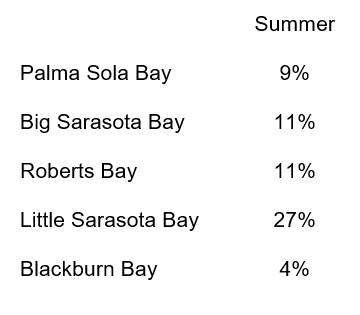Seagrass & Algae
Seagrass and macroalgae (i.e. seaweed) are important for thriving estuaries. They also act as indicators for determining the overall health of Sarasota Bay. Every year, SBEP relies on partners and citizen scientists to help gather data about these indicators through the Eyes on Seagrass Program and other statewide monitoring efforts. Results are then compiled into the Sarasota Bay Ecosystem Health Report Card, which offers a snapshot of how our bay is doing.
Seagrass in Sarasota Bay
Seagrasses are flowering plants that live in the shallow waters of estuaries and lagoons. There are seven distinct seagrass species are found on the Southwest Florida Gulf Coast. However, most seagrass meadows are dominated by three species:
Turtle Grass - wide, flat blades
Thalassia testudinum

Manatee Grass - round blades
Syringodium filiforme
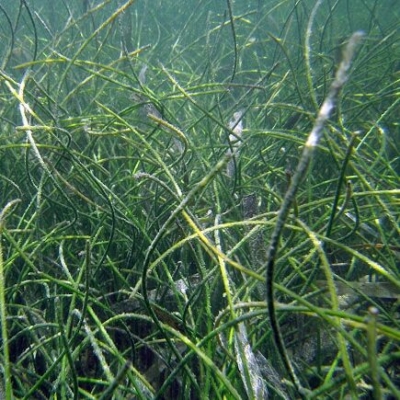
Shoal Grass - thin, flat blades
Halodule wrightii
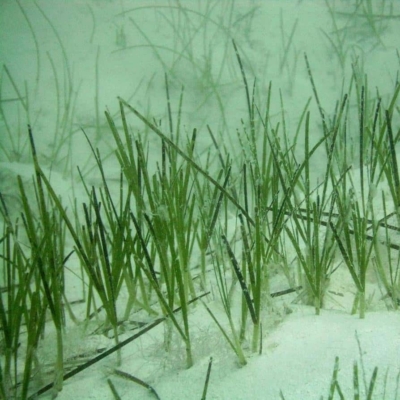
Why Are Seagrasses Important?
Seagrasses provide numerous benefits to marine critters and to people:
- They support the local economy around water-based tourism.
- Their roots can help stabilize the seafloor and prevent erosion.
- They help filter water by capturing sediment and pollutants.
- They store carbon and are considered a blue carbon source to help offset the effects of climate change.
- They release oxygen into the water and atmosphere
- They provide habitat for numerous commercial and recreational fish, shellfish, crabs, shrimp, sea cucumbers, sponges, and worms. Seagrasses are considered to be important nurseries for many species.
- They provide food for turtles, manatees. Algae and other small organisms (called epiphytes) that settle on seagrass blades provide food for fish, crustaceans, and invertebrates.
What Do Seagrasses Mean for Water Quality?
The extent of seagrass in Sarasota Bay is a good biological indicator of water quality. Clearer water with less algae means sunlight can reach deeper depths, allowing seagrasses to expand into deeper water.
How is Our Seagrass Doing?
In 2022, the Southwest Florida Water Management District (SWFWMD) mapped 9,962 acres of seagrasses throughout all five bay segments of Sarasota Bay. This is 5%, or 577 acres, less than what we had in 2020, and 3,511 acres less than the highest seagrass acreage the bay had in 2016.
Click here to read more about recent seagrass numbers and what they mean.

Macroalgae in Sarasota Bay
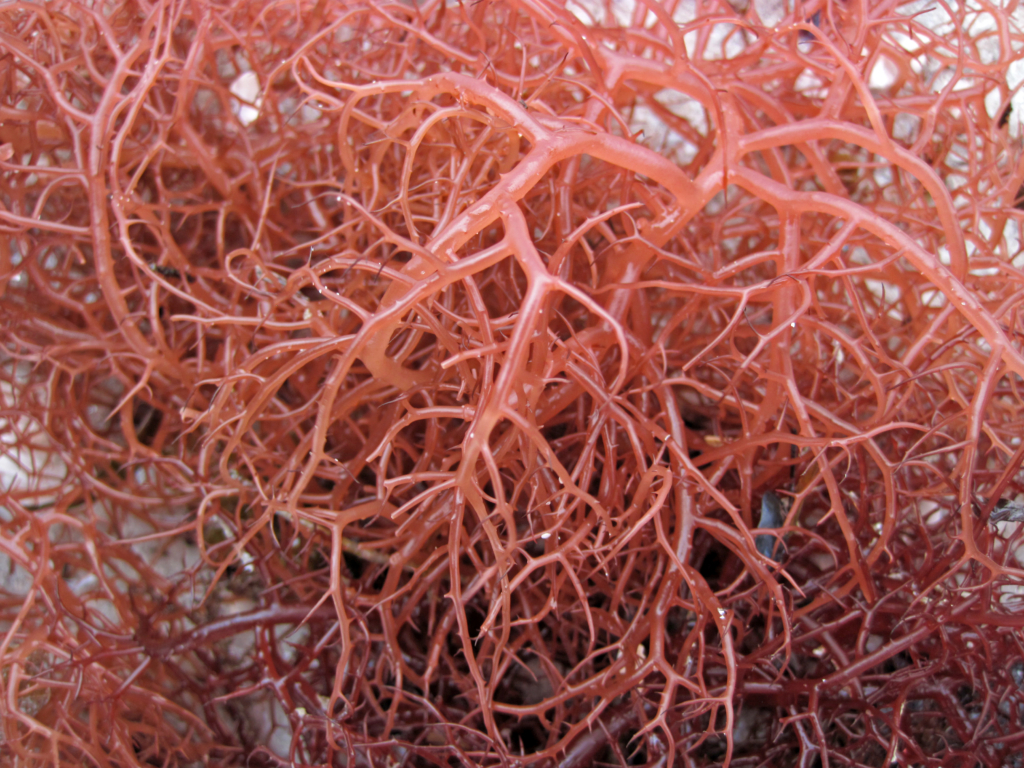
Macroalgae: or seaweeds, are important food and habitat for estuarine creatures. However, they can respond quickly to nutrient pollution by growing and shading out seagrass meadows. Plus, the bacteria that break down macroalgae blooms can reduce oxygen levels in the water, which is dangerous for fish and other wildlife. Therefore, large macroalgae blooms are an indicator of poor water quality.
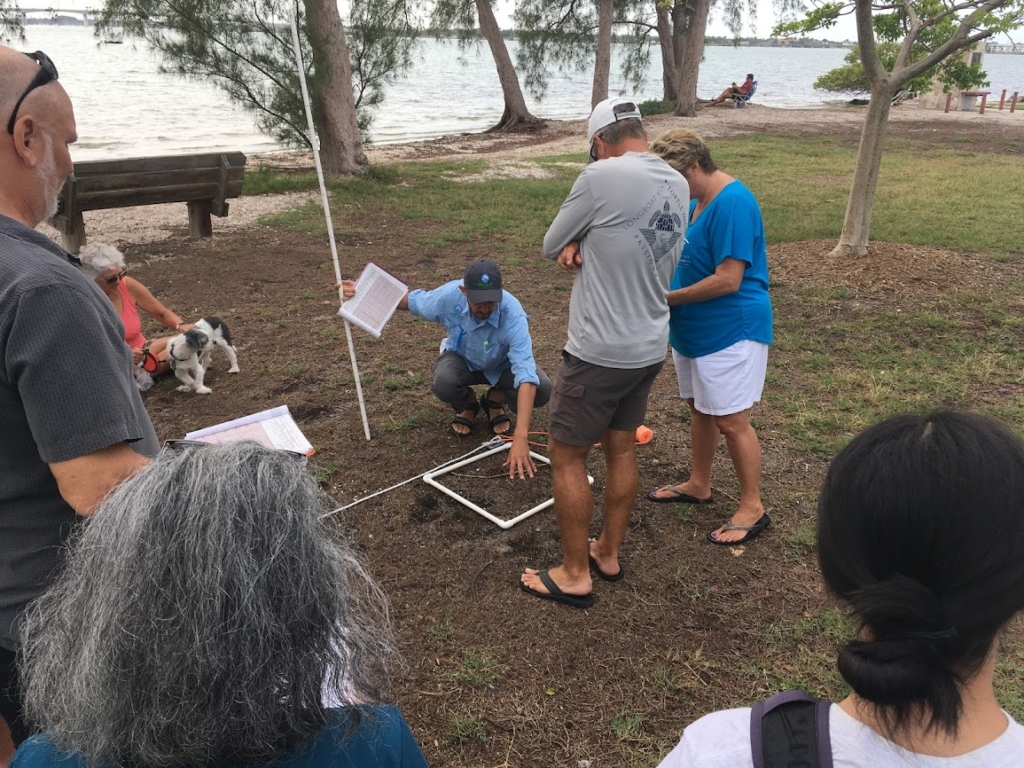
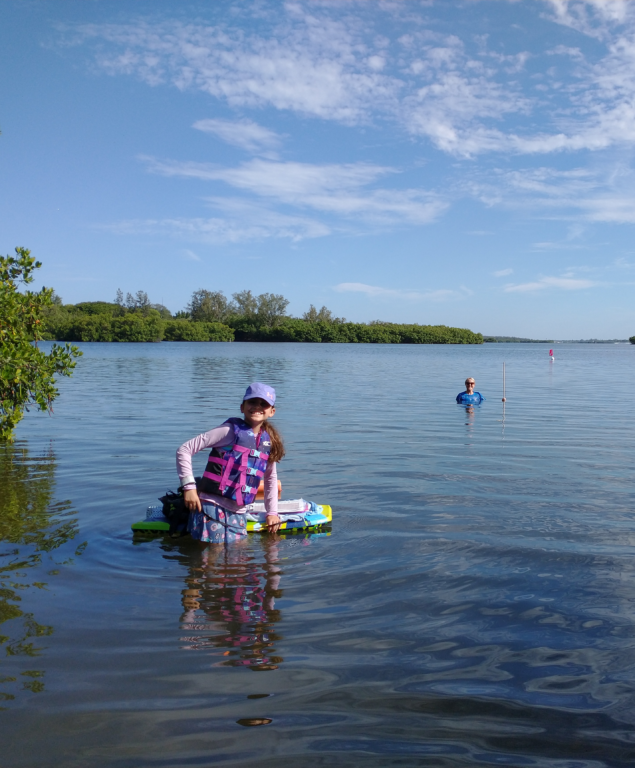
2022 Eyes on Seagrass Macroalgae Results
Sites Sampled: 41 locations from Palma Sola Bay to Blackburn Bay
- Algal cover was higher overall in the spring
- Palma Sola Bay and Big Sarasota Bay (upper regions of the Bay) had much higher algal coverage than lower regions in the summer.
- Overall, macroalgae coverage was not overly abundant.
2022 Average Macroalgae Coverage (percent of bottom covered)

2021 Average Macroalgae Coverage (percent of bottom covered)
